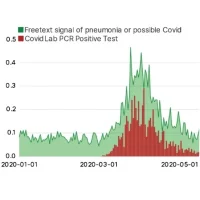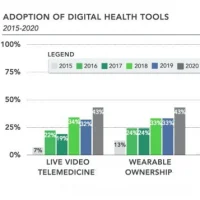The U.S. Kaiser Permanente system reports on the efficiency of its special telemonitoring programme for COVID-19 patients.
You might also like:Remote Work and Virtual Consultations: Emergency Setup
The COVID-19 pandemic has boosted demand for general medicine providers and reduced it for subspecialty services. To address this imbalance and ensure optimal delivery of care in times of crisis, Kaiser Permanente launched a telemonitoring programme involving physicians and nurses from the less in-demand areas. These healthcare professionals received dedicated training and performed telemedicine check-ups on COVID-19 patients. This approach allowed the organisation to both ensure social distancing and deploy resources that would have remained underused otherwise.
The study published online in Telemedicine and e-Health reports on the virtual home care programme (VHCP) utilisation over the month of October 2020. The patients diagnosed with COVID-19 and remaining in home care were contacted by the participating staff by phone on a daily basis. Some patients qualified to receive portable pulse oximeter devices. After becoming clinically stable, patients were transferred back to their primary care physicians.
Among the participating patients, the majority were female (57%), black and Hispanic (42% and 31% respectively). Obesity was the most common comorbidity (35%), as were hypertension (32%) and diabetes mellitus (19%).
According to the report, 2,751 patients who had agreed to enrol in VHCP required fewer urgent care visits, ER visits and admissions in comparison to those who declined to enrol. In addition, the preliminary overall mortality rate for the VHCP participants with COVID-19 was lower than the mortality rate across the Kaiser Permanente system: 1.33% versus 2.32%.
Among the challenges Kaiser Permanente had to address during the implementation of VHCP were:
Significant turnover rates among the participating provider staff which led to dynamic staffing needs and lack of continuity of care and provider experience.
Management of non-English-speaking (Spanish-speaking) patients, with only part of necessary materials (such as instructions for the pulse oximeters) provided in a language other than English (i.e. in Spanish).
Absence of an alert system for the oximeter devices’ users during the initial stage of VHCP.
Overall, Kaiser Permanente has demonstrated how an existing telemedicine
programme can be effectively adopted for the COVID-19 management needs
resulting in lower healthcare utilisation and overall patient mortality.
Image credit: Nattakorn Maneerat via iStock










